Olympus 25mm F/1.2 vs 25mm F/1.8 Lens Review
Part II - The Olympus 25mm F/1.8
Contents
Welcome to part 2 of this comparison. I am going to focus on the Olympus 25mm F/1.8 lens in this section. If you missed part 1, I looked at the 25mm F/1.2 Pro lens. In part 3 I will be comparing these two lenses together and really seeing the difference between them. I loved the 25mm Pro. I was surprised. I have always been more of a “35mm” focal length person and much less a “normal view” shooter. However, Olympus 25mm lenses have been slowly changing that. I have been shooting with this view a lot more lately and I really am starting to like it. The Olympus 25mm F/1.8 is just slightly shorter than the 45mm prime, and just slightly taller than the 17mm prime. It is wider than the 45mm though, and roughly similar to the 17. The 17 has a nicer feel. This 25mm really just feels exactly like the 45mm. In fact…it is very similar to the 45mm in terms of results as well.
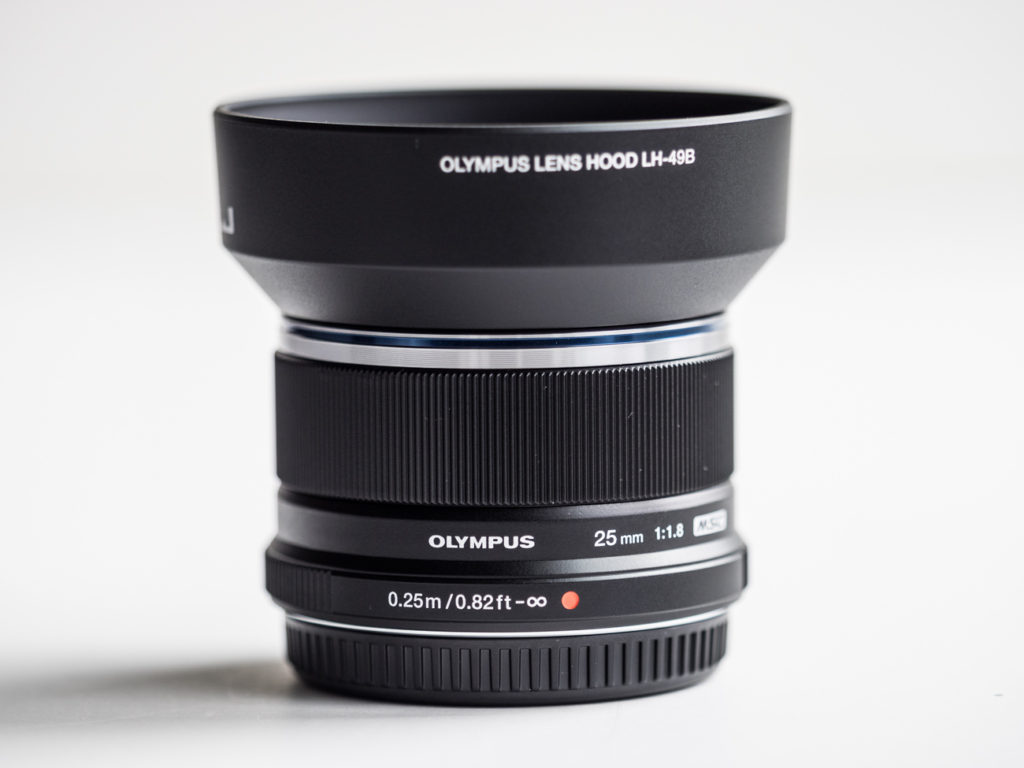
The lens hood is a twist to lock and holds in place very well. Easy and simple design. It also reverse for storage. Then again…on such a small lens you may never need to reverse it even for storage.
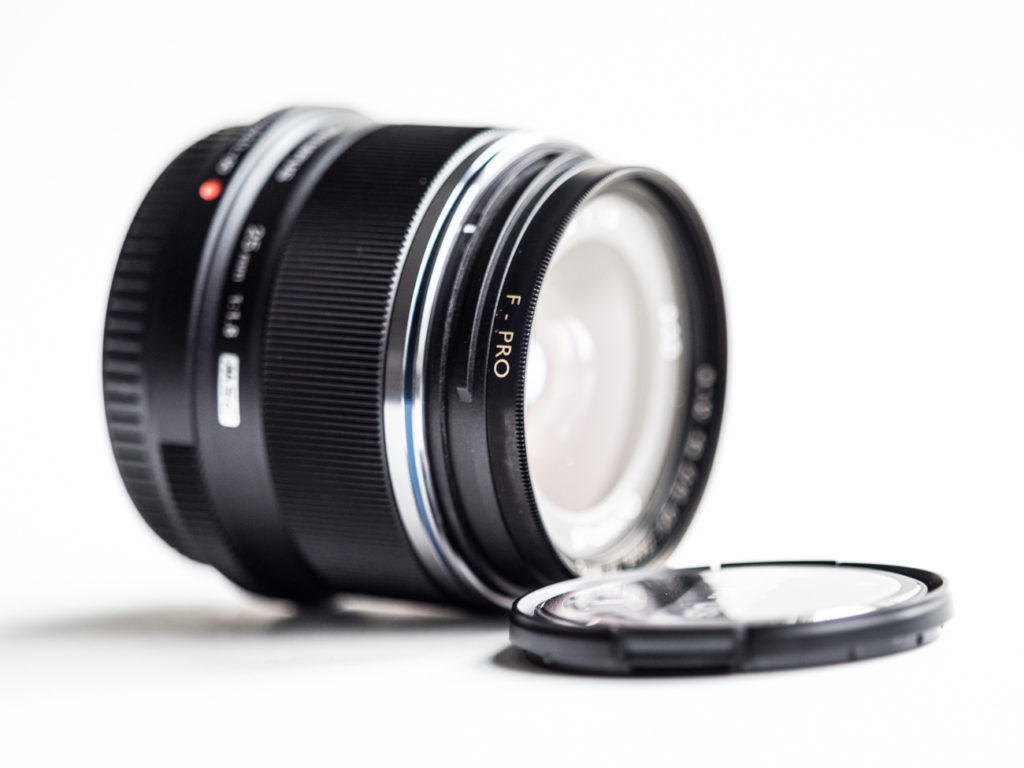
You can see in the photo above and below the lens is small. It has a 46mm filter thread. If you use this lens on an E-PL of pen F body the entire package will be very compact. The focus ring does not have a clutch and the grip is plastic. The manual focus feel is similar to other Olympus lenses…the feel is good…but small adjustments seem to not be linear to large adjustments. I wish Olympus would adjust their electronic focus to be smoother and more consistent in this regard. Large adjustments are quicker and smoother than small adjustments. Small adjustments seem to need more turn that doesn’t make sense.
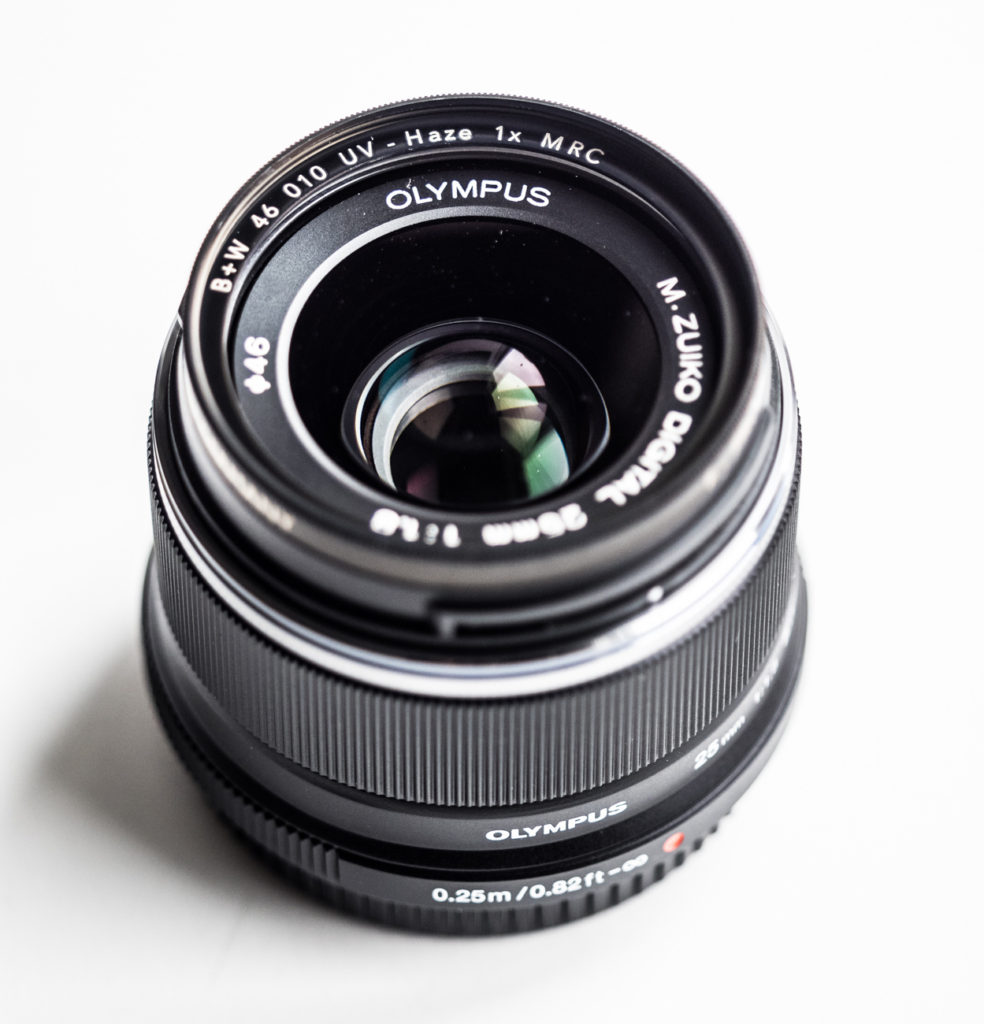
You can see in this photo below the lens mounted on an E-M1. The lens will barely extend past your knuckles when holding the camera. Small, light, and surprisingly solid in image quality. This lens holds true to the M43 ethos. The body is plastic unfortunately. It keeps the weight low…but it would have been nice to have the metal feel. Regardless, the lens still feels decent.
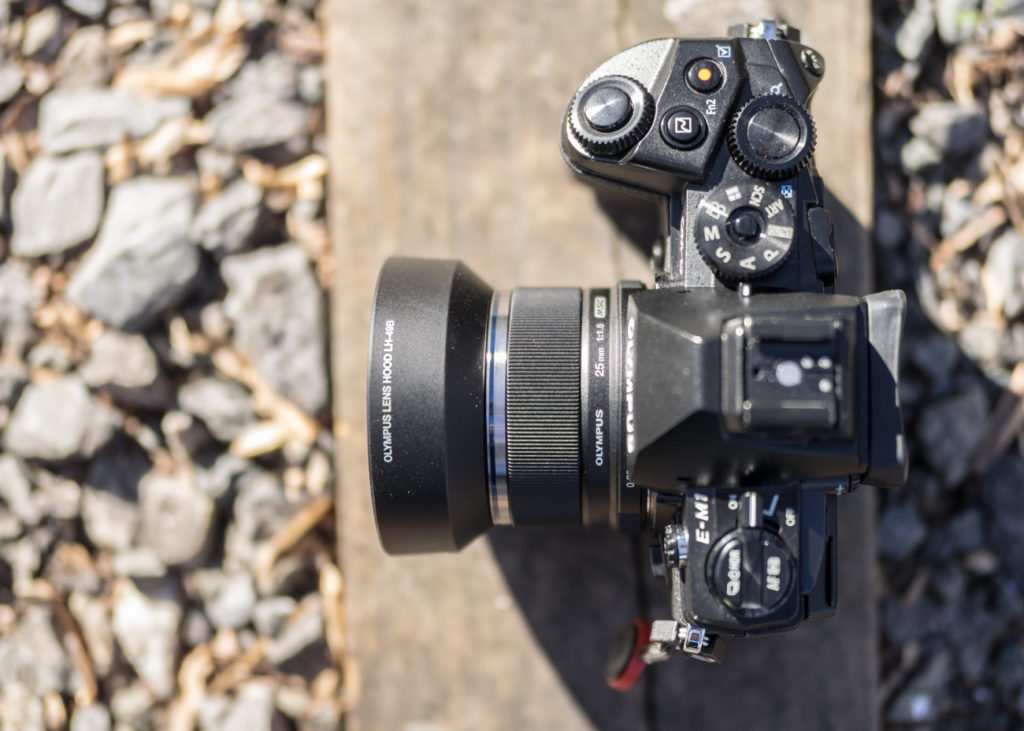
This is a pretty simple lens in terms of body and construction. The lens is not weather sealed but doesn’t seem to have too many points of entry aside from the focus ring and mount once a filter is added. Not too much to say. It does have two aspherical elements and seems pretty well controlled in terms of vignetting and distortion. Some of this might be software correction. Regardless, not too much to say on these fronts. Lets jump into some photos.
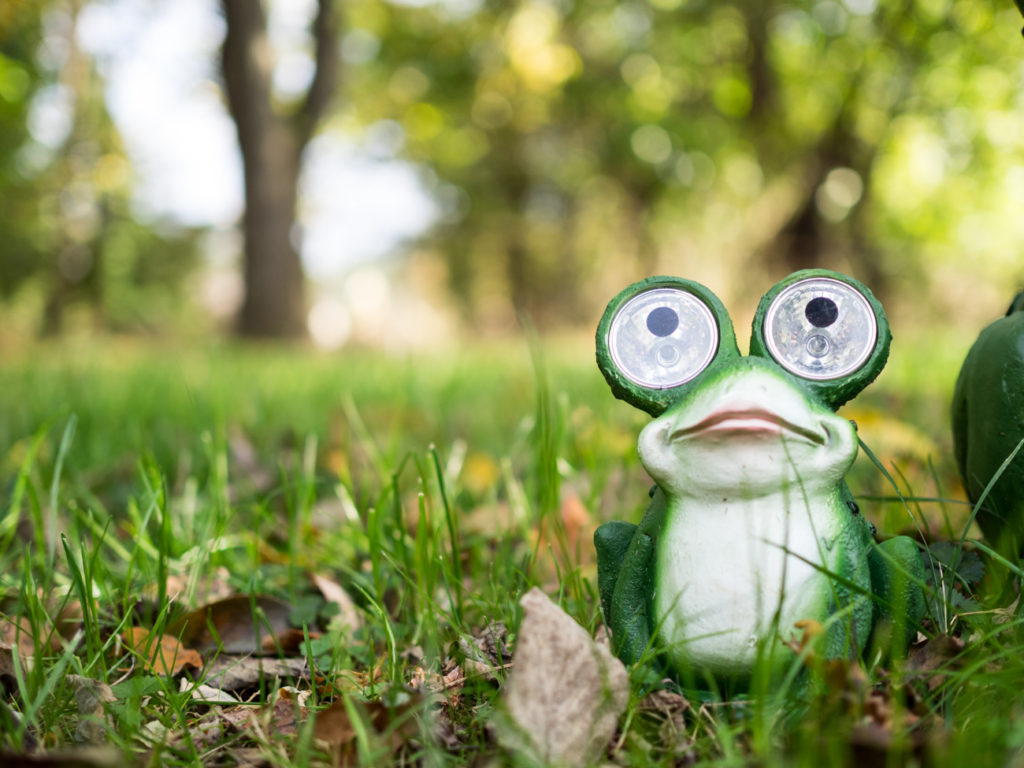
This lens is totally made to shoot wide open. Close focus is REALLY close for a lens of this focal length. 9.4″ is the spec. Quality holds up nicely when in close and wide open. You can see in this shot focus fades out nicely and is not overly busy at all. Very pleasing in my opinion.

One thing that jumps out to me is how much detail is rendered sharply. Some people might think F/1.8 is not enough on m43 cameras…but I think this is a good sweet spot. You have plenty of rendered focus…plus plenty out of focus areas. I haven’t felt this lens needed a wider aperture while shooting with it.

In these two shots you can see how quickly focus falls out yet the main subject areas are still retained. A faster lens would have had less of the face and ears in focus.
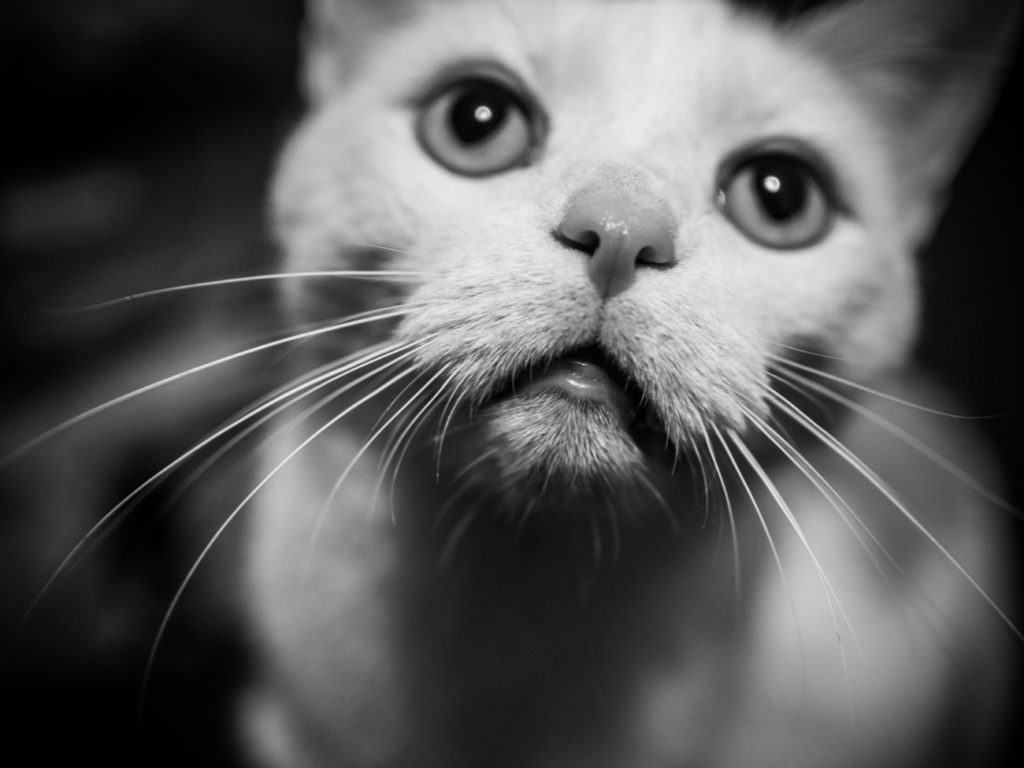
Nice “story-telling” bokeh. I really like the look of this rendering.
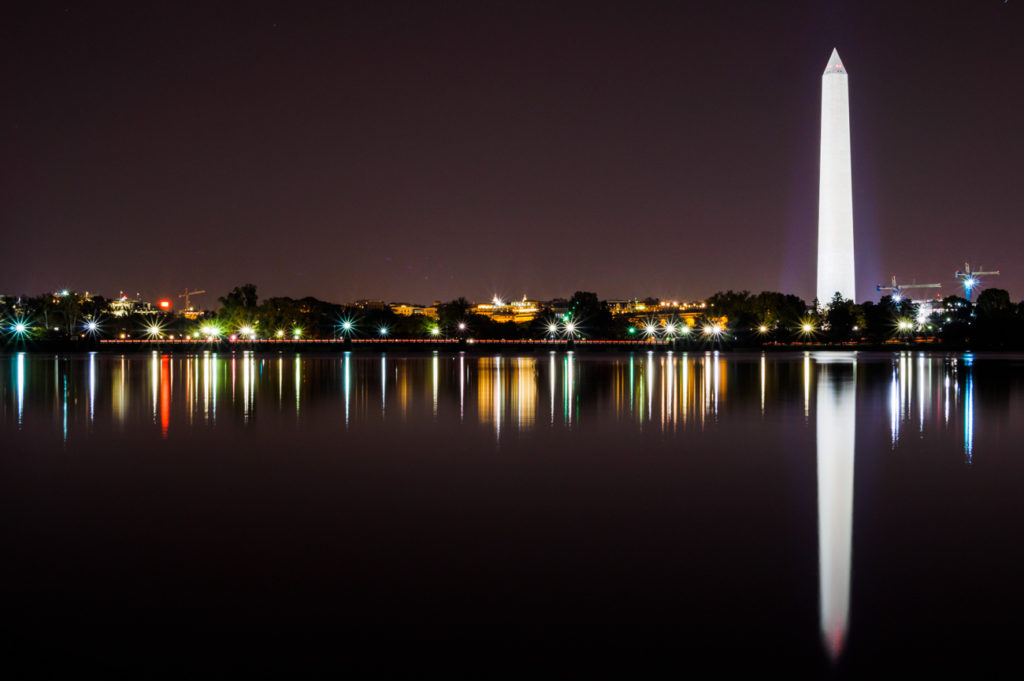
This shot above shows off nice controlled starbursts at F/11. Not too wild, and only on the major points of light.
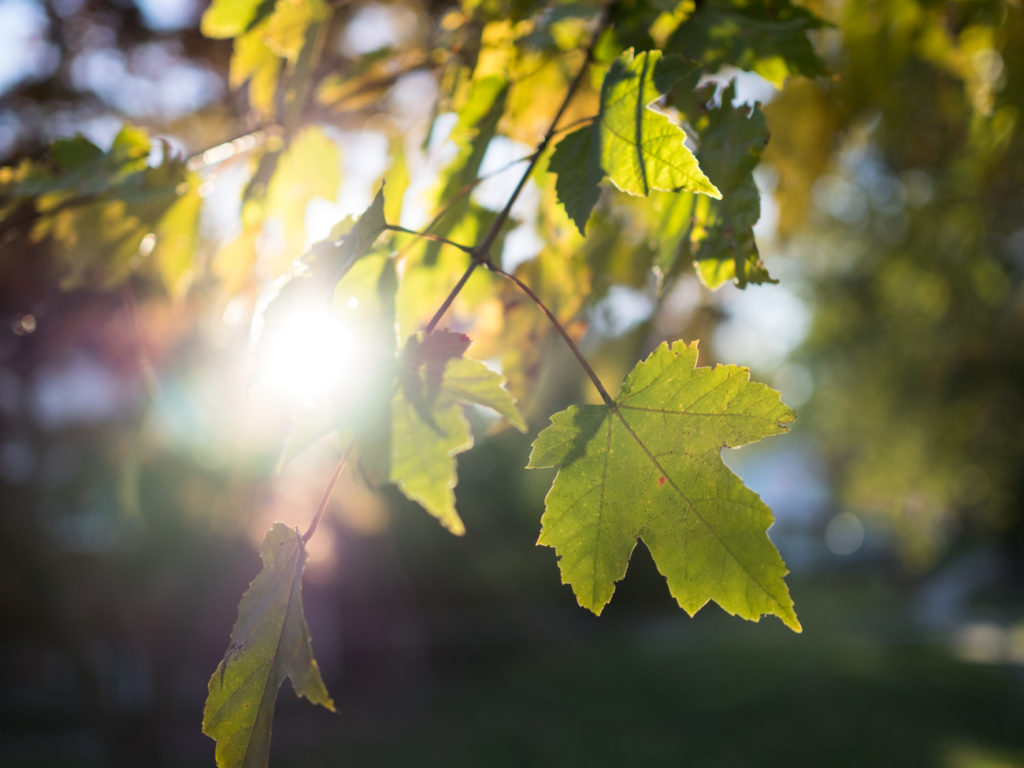
In this shot I intentionally tried to get flare. I really like lens flare with this lens. It’s simple and pleasing. Contrast softens a little…but it still retains nice color and doesn’t give odd artifacts or spots.
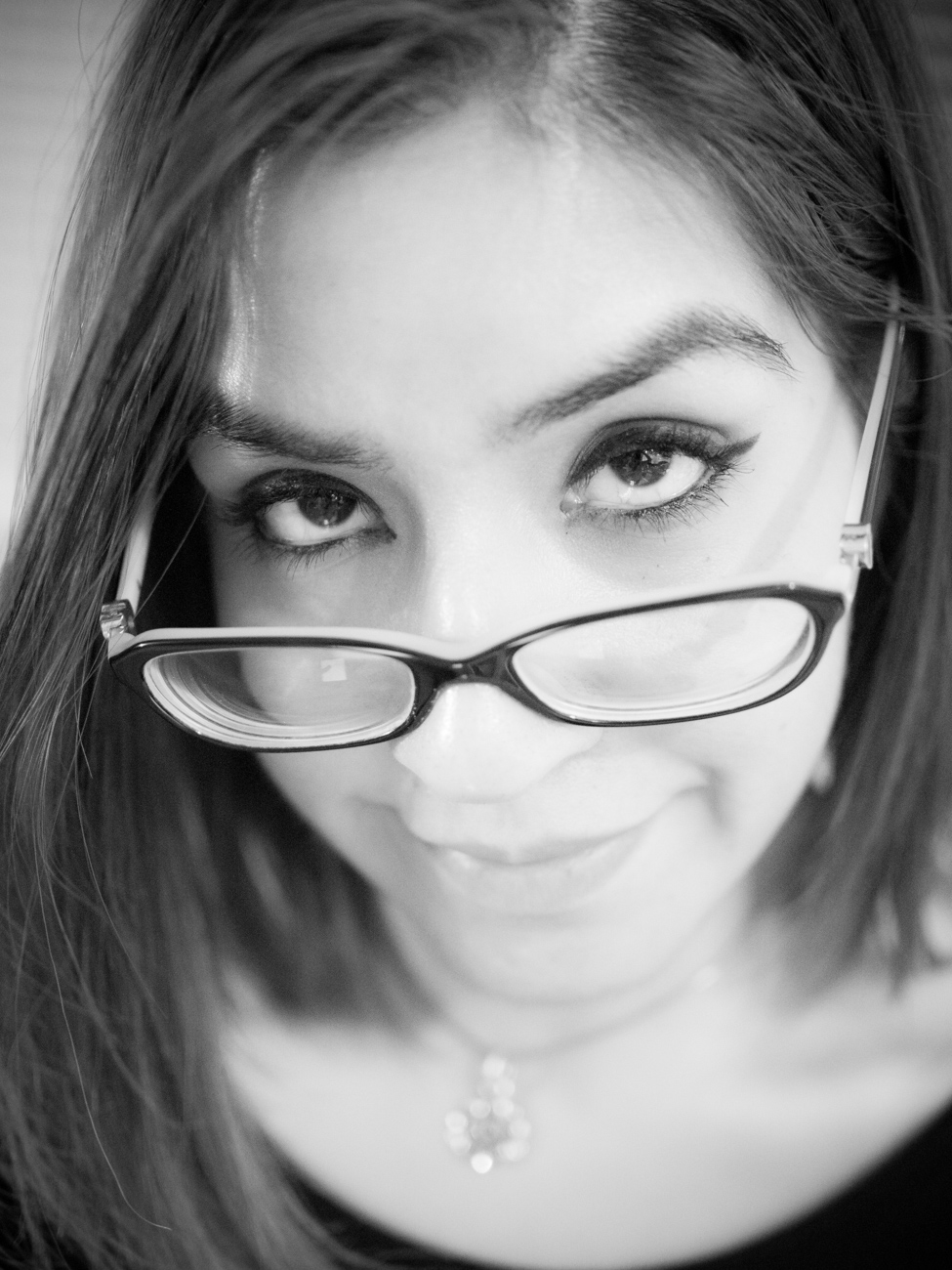
With this focal length, portraits are perfect when shooting full body up to about waist up. Anything tighter requires you to get close and still introduces a little perspective distortion. That’s why most people consider the “next focal length up” a portrait lens. The 45mm, 60mm, etc… Your subject might not be so comfortable with you this close…but the pictures will still be great. Wide open there is enough depth of field to get eyes sharp, and a bit of the nose too. Just enough honestly.

Rendering is nice and soft and works perfect for images like these. Household personal photography where you want some impact. Sure you could have shot this with a phone…but it would not look nearly this nice. And no this cutey is not mine…but the lens is! I find this lens can really go both ways in processing as well. You can reduce contrast a little and have a wonderfully smooth image, or you can push contrast and add some clarity to really bite in the details. This lens handles both outputs great and is very flexible when it comes to the look in processing. Great detail is rendered without being overly clinical or biting in the detail edges.
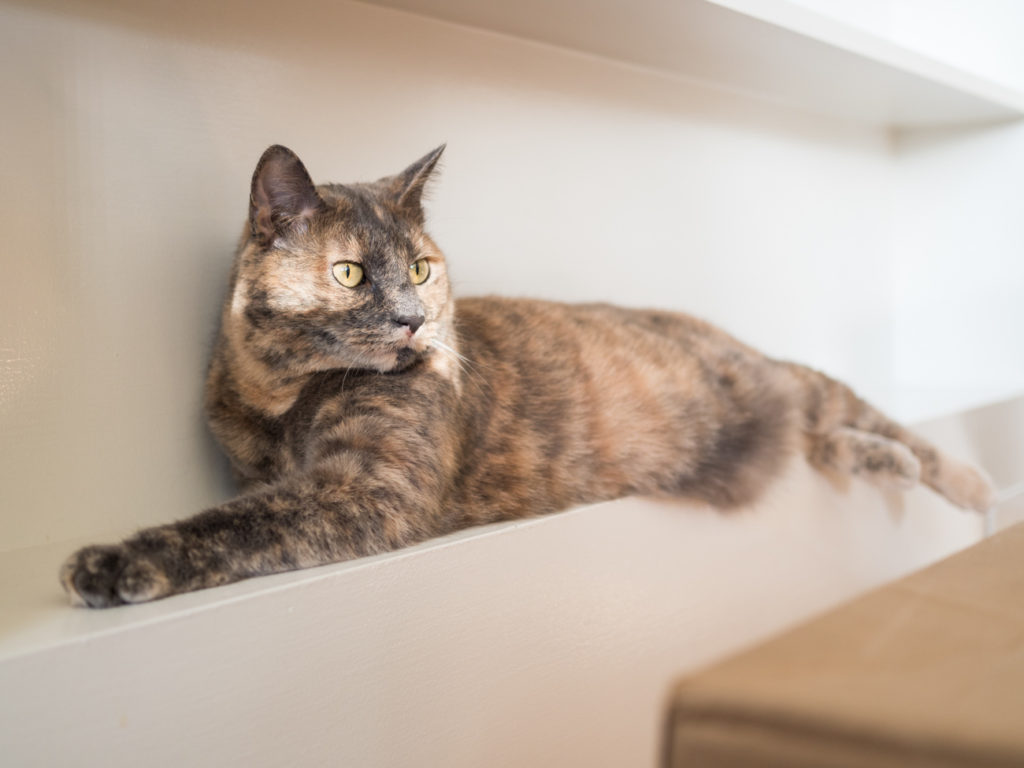
Again, another example of smooth fall off of the focus.
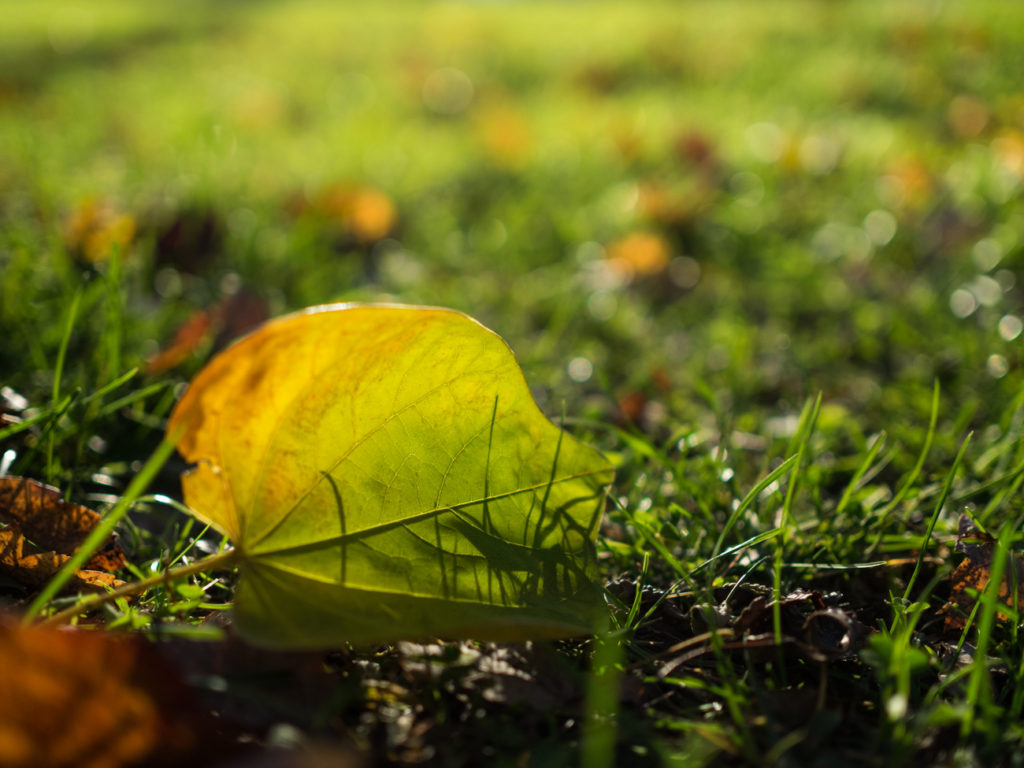
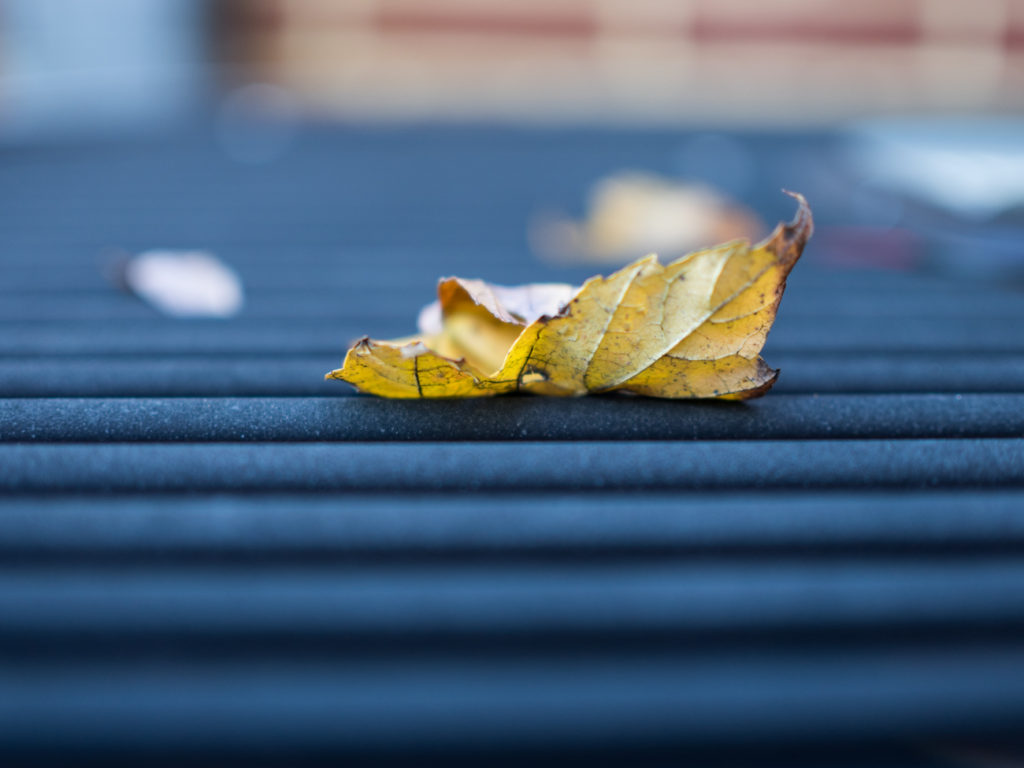
There two previous images are examples to show just how little the plane of focus can be even at F/1.8 on m43. The closer you get the smaller the plane. Even at a 5 – 10 foot distance you can get great separation and that 3D pop.

In conclusion… I really enjoy the F/1.8 25mm lens. I find it grew on me very quickly as a “personal photography” lens. I found I was leaving it on my camera as my every day walk around setup. In fact the look of the files, the colors, the bokeh all was really pleasing in these scenarios. The lens was never too tight…and in fact you can even take a selfie with it. You won’t have a lot of extra scene in the frame…but it is just enough area for two people to takes a selfie! Focusing is quick, it hardly adds any weight to the camera, and offers excellent results. It is not the most critically sharp lens, but it definitely delivers. I feel it is basically the Olympus 45mm shrunken down to 25mm. I really feel as if it is the same lens with a wider view. If you like the 45mm you will love this 25mm lens. I would have liked the body to have been closer in feel to the 17mm. I certainly did not expect it to be like the pro, but for such an inexpensive lens I can live with the plastic. Especially when the lens delivers honestly very good images. I really feel this is one of those quiet little gems in the Olympus lineup. It doesn’t get the attention it deserves.
In the next part I will be comparing this lens directly to the 25mm Pro. This is where things get mighty interesting. You certainly do not want to miss it. Stay tuned!
JOIN OUR FACEBOOK GROUP

“I am a full time commercial photographer specializing in architecture and panoramic imagery. I love working with all kinds of businesses and creative people in various industries to help them visually achieve their goals. I also love landscape photography and spending time creating images of insects and the natural world. I started the Unlocking Olympus site with the goal of helping others liberate their creative passion for photography through smaller and lighter gear. It has grown into an amazing community that has been a joy to interact with on a daily basis. Thank you my friends!”

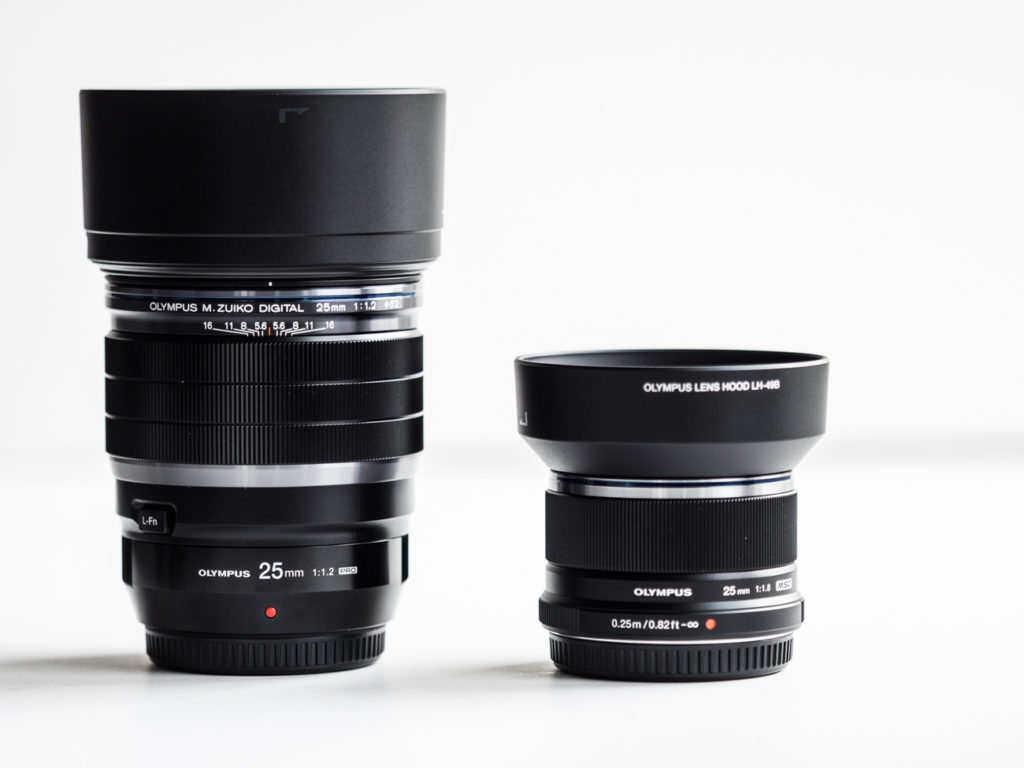


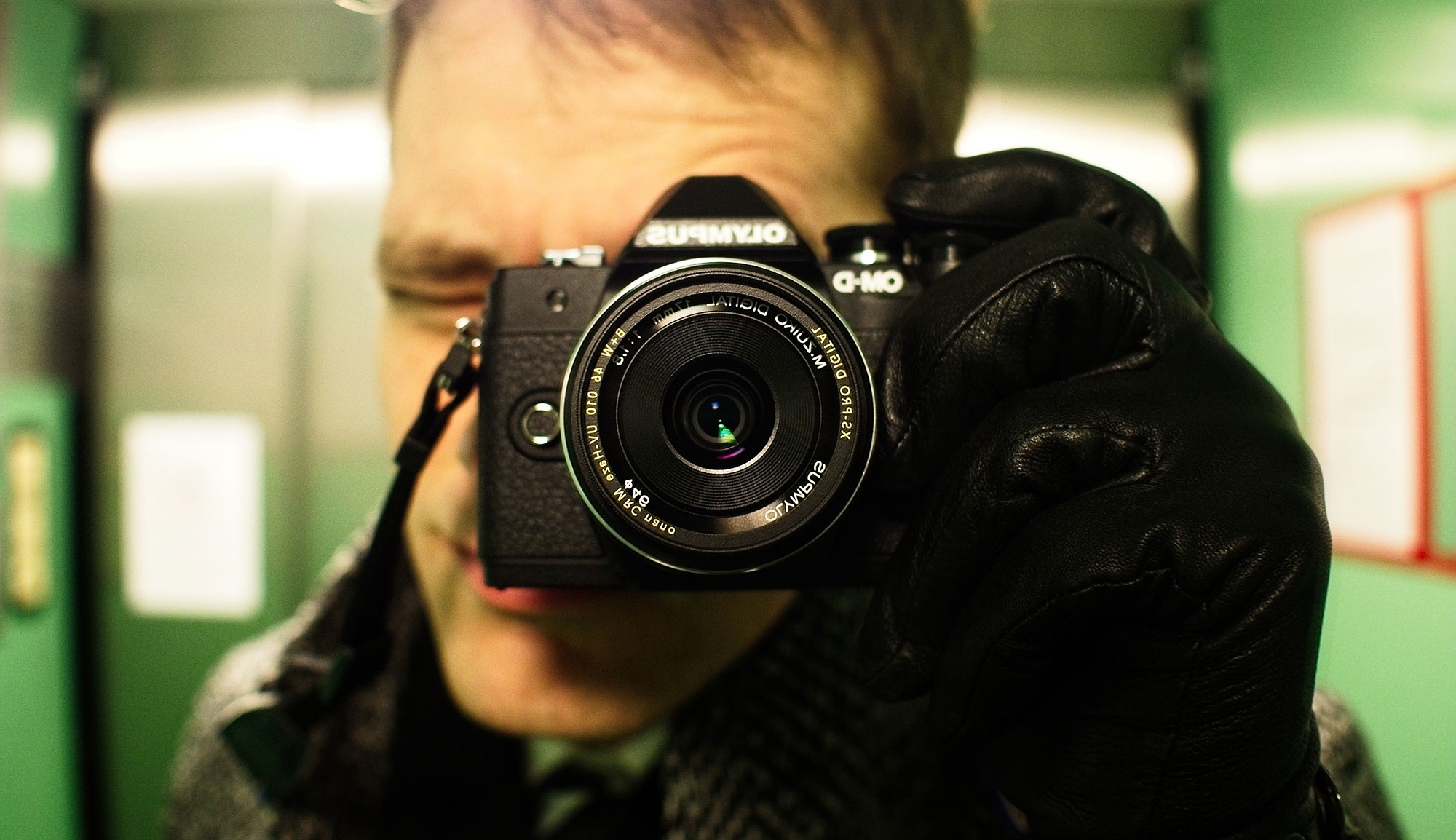
Alex Zafer
April 21, 2017 @ 17:05
Good review and fine comparison. I mostly use the 17mm 1.8 as a walk-around for my street photography, however, I’ve been on the fence too… and settling for the 25mm 1.8. I think mostly it is about size for me. I was also leaning towards the 25mm Pana/Leica 1.4 — but the size of the Oly is swaying me, not to mention it is also half the price of the Pana.
The Photonerd
April 21, 2017 @ 17:14
Thanks for your grate comparison. I would go for the 1.8 version because
of weight and cost but I went on with the Panasonic 25mm 1.4 😉
This
lens is not as big as the 1.2, it is light and it performs very well on
the E-M1. In fact there is another lens that needs to be considered in
this comparison, the Sigma 30mm f1.4.
As you see you have a lot of “low cost” options to get more light on your sensor if you look around.
Samuel L. Mingo
May 2, 2017 @ 07:39
I think the 1.2 would be great if you were in some harsh conditions, and needed weather sealing. Other than that, I don’t think you could justify the added size and weight if there wasn’t any sort of light gathering ability. I have the 1.8 and it stays on my camera because it’s small, light, sharp, and generally just gets out of my way. I feel like the 1.2 would get in my way, and equipment that gets in the way is never good.
H_
May 4, 2017 @ 19:33
I had the 1.8 and upgraded to the 1.2…
I think that the 1.8 lens does not provide enough background blur when you want to fit a larger subject (like a 3/4 or full person) in the frame. The 1.2 is just enough.
Also I think that the transition between focused and out-of-focus areas looks smoother with the 1.2 (even when stopped down to the same 1.8). Plus I love the subtle “swirly” quality of the background, as seen in the first turtle photo here.
I’m saddened by the size and weight, but finally I’m getting the smoothness I wanted.
Oh and the lens hood of the 1.8 lens is really crappy. Kept falling off while walking.
pdelux
May 5, 2017 @ 04:10
As an owner of the Pro lens, I agree with your decision to stick with the 25 1/8. I think the points you made that it works for your needs are very well thought out.
As for me I do like the Weather sealing and yes the Manual Focus is a dream to use, for a while I thought it was real manual focus as it is just like my Voigtlander 17.5mm. I cant believe its Focus by Wire. I am finding I am using the manual focus now more often because the AF cannot be trusted at such thin DOF especially with faces that are not front on where it cannot obtain EYE focus, not ony my lowly Em 5 MK 1 with its large focus box.
i think the main advantage is you can step back and take wider shots than the F1.8 and still have smoother bokeh and transitions. So your point about the 1.8 being wider is true – but it depends if you still want really smooth bokeh, you can step much further back with the PRO lense and as they say “have your cake and eat it too”. These are the type of shots I like – more than the close up shots where only a sliver is in focus. This is where the lens really shines and gives the most 3d look because you capture alot of foreground as well as the background – and the smooth transitions from OOF to Focus to OOF really gives a 3D look.
Ted Ramasola
September 23, 2017 @ 10:36
Thank you for doing this review, Tony. I like that you did a side by side. I am mostly a video shooter using Lumix cameras with adapted lenses. I did not yet commit to m4/3 lenses and only have the 12-35mm f2.8 from lumix. I am currently testing the Olympus 25mm f1.8 and my frustration with most af native lenses are the lack of a good manual option. The lumix lenses I have tested, including the 25mm f1.7 lumix all RESET their focus settings when the camera is turned off and on again. So my question to you is this, in your test of the Olympus 25mm f1.2, when you engage the manual focus clutch, will it have,
1. Hard focus stops that are repeatable, (I might need this when using a follow focus)
2. With the clutch engaged, will the focus settings remain even when camera is turned off and on again? I need this when using the camera on a film set where we might take a break and need the same settings upon return.
Again, thanks for your review.
Ted Ramasola
September 23, 2017 @ 12:07
Thank you for doing this review, Tony. I like that you did a side by side. I am mostly a video shooter using Lumix cameras with adapted lenses. I did not yet commit to m4/3 lenses and only have the 12-35mm f2.8 from lumix. I am currently testing the Olympus 25mm f1.8 and my frustration with most af native lenses are the lack of a good manual option. The lumix lenses I have tested, including the 25mm f1.7 lumix all RESET their focus settings when the camera is turned off and on again. So my question to you is this, in your test of the Olympus 25mm f1.2, when you engage the manual focus clutch, will it have,
1. Hard focus stops that are repeatable, (I might need this when using a follow focus)
2. With the clutch engaged, will the focus settings remain even when camera is turned off and on again? I need this when using the camera on a film set where we might take a break and need the same settings upon return.
Again, thanks for your review.
Eric
September 25, 2017 @ 08:26
Hi Ted,
In case Tony doesn’t get back to you, I’d like to give you my experience with the Olympus clutch (albeit on the 12mm 2.0, so it might be different with this 25mm 1.2).
Like you, I found it frustrating as all hell when my focus would have to be reset when the camera was turned off or went to sleep between takes. With the Oly lens and the clutch “disengaged” (pulled back to ensure full manual control), the focus point does indeed remain the same.
I only hope the results are the same with this 25mm lens as they are with my little 12mm!
Ted Ramasola
September 25, 2017 @ 20:46
Thank you for sharing your experience, Eric.
Jin Wan
October 21, 2017 @ 05:09
Thanks for your very helpful review Tony. I currently have the Panasonic 15mm f1.7 but it doesn’t seem to play too well with my Olympus OMD-EM5 Mk2, so I was contemplating perhaps the upcoming Oly 17mm f1.2 Pro… OR… for a LESSER price, get BOTH an Oly 17mm and 25mm f1.8. I think your review above convinced me of the latter, because frankly, having already got the Oly 12-40mm Pro lens, like you, I’m now much preferring to smaller size lens (that was what the micro four thirds system is meant to do). Appreciate the review.
Thinkinginpictures
February 13, 2018 @ 02:52
Lensrentals did a review of all the M43 25mm’s. Seems to echo your findings here. The 25mm 1.8 really is a surprisingly good lens for the money. I’ve done test shots against my loxia 50mm on an A7. It can really give the 50 a run for it’s money. No, the sensor and lens combination doesn’t resolve quite as much. In the center under 24MP though, you’d be hard pressed to see seriously massive difference. I really wish they had re-released a 25 and 45mm with better build and aperture rings. Perhaps 9 blades. Instead we got bazooka sized lenses at Zeiss prices. I’m not complaining but for me…that’s the brakes.
Marcus Dewinter
January 5, 2024 @ 22:24
I own the 45mm f/1.2 and I absolutely love it. It has replaced the f/1.8 version and I never looked back. The 25mm is not as good I’m afraid, so I’ll keep my Panasonic 20mm, which is a fantastic little lens.
Menno
March 9, 2024 @ 13:35
Ha Marcus,
In my opinion the difference between the 25mm f/1.2 and the 25mm f/1.8 is the same as the difference between the 45mm f/1.2 and f/1.8 lenses. (I own all of these lenses).
Although the f/1.8 primes are very good, and off course very portable compared to their Pro-counterparts, the rendering of the Pro lenses can be phenominal. But in the end you can’t go wrong with any of these lenses.
Tony Robinson
January 18, 2025 @ 00:05
Hi Tony.
Thanks for your thoughtful and informative review. I own all three of the Pro f1.2 primes and really enjoy the user experience, the weather sealing, functionality and more importantly the consistency of the output of these lenses compared to the f1.8 primes on my EM1 Mkiii (which I now use with my Pen EP5).
Whilst the f1.8 primes give excellent results, the Pro series offer the same sharpness at f1.2 that the M.Zuiko set give at f1.8 and have, in my experience better micro contrast and way better rendering, edge to edge. They also share the same cap and sun hood size as the 12-40mm f2.8 Pro zoom, with no need to remove/replace a decorator ring in use. If you are a Pro photographer or a serious hobbyist, I recommend you take a look at them and consider the used market if you want to give one a go. Regards. Tony.